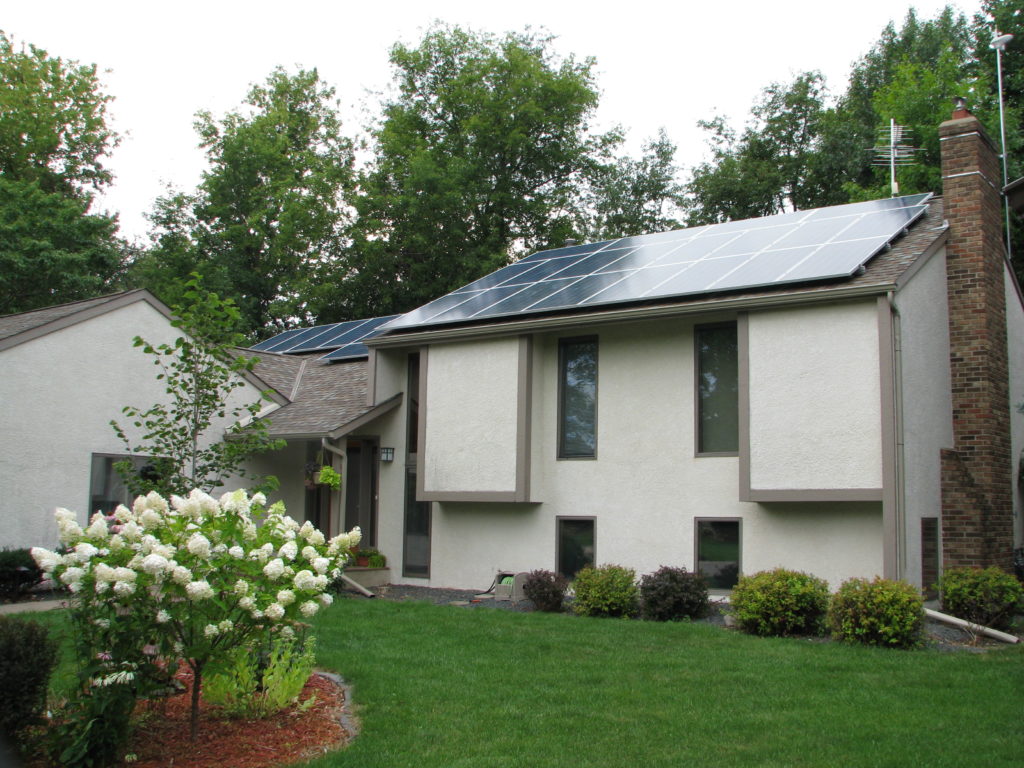In December 2014 we were contacted by AllEnergy Solar (referral link) to gauge our interest in buying a solar PV (photovoltaic) system to install on our house. We had been thinking about doing this for some time, so the contact fell on fertile ground and an appointment was made. The process went very smoothly, despite some twists and turns (more on that later) and finally, in September, 2015, we started generating power and selling it back to the utility. The personal sense of satisfaction in this should not be underestimated!
The basic process, as with most major purchases, starts with your budget. The great thing about a solar PV system (at least in Xcel Energy territory) is that the payback is pretty good between net metering and a generous Solar Rewards program (UPDATE: I’ve heard this program is much less generous, but at the same time,. The best way to think of it is as an investment (more like a bond than a stock) that pays you an income stream. It’s pretty easy to model the return on investment as most of the parameters are known, and future ones can be forecasted with fairly narrow variability (e.g., the inflation rate for electricity). In fact, it may be possible to finance, such that the entire transaction is cash-flow positive from the beginning.
Details
The twists and turns involved two aspects: 1) the different rebate programs that were available at that time and 2) the particulars of our roof install. In 2015, there were two rebate programs in Minnesota, Made in Minnesota (no longer available) and Solar Rewards (through Xcel Energy). The former involved buying equipment made in Minnesota that was more expensive, but included a much higher, per kWh (kilowatt hour) rebate. The tradeoff was a higher up-front cost for a faster ROI. The MIM program had limited funding and was implemented as a lottery. AllEnergy Solar took care of the application for us, but we didn’t get in. In the end, I think we got the better system because it was based on the SolarEdge inverter / power optimizer system, which has some advantages (maybe to be spelled out in a later post). The downside was delay as the panels now needed to be ordered from overseas and the market supply was tight that year so the lead time was a few months.
The second twist had to do with the panel layout on our roof. We have a skylight which I like to keep clear in winter to avoid ice dams. AllEnergy’s first layout had panels installed below the skylight where I use a snow rake to remove snow build up after heavy snows. Fortunately, this was fairly quickly taken care of by Brian Allen (one of the two brothers who started AES). Brian shared his CAD computer screen with me while I was at work and we were able to come up with a design that put the panels higher up on the roof, above the skylight.

Once the equipment was all in stock, the install process went fairly quickly. There was a week or so wait for Xcel to install the new bi-directional meter (runs backwards when you are generating more than you are using) and the generation meter which measures the energy generated for the 10-year Solar Rewards rebate. We’ve been very happy with the system overall. The financial return has been a bit below the model, but variables such as weather make this understandable.
We participated in a solar open house in October 2019, and were asked by Solar United Neighbors to do a virtual tour. The following video is the result.